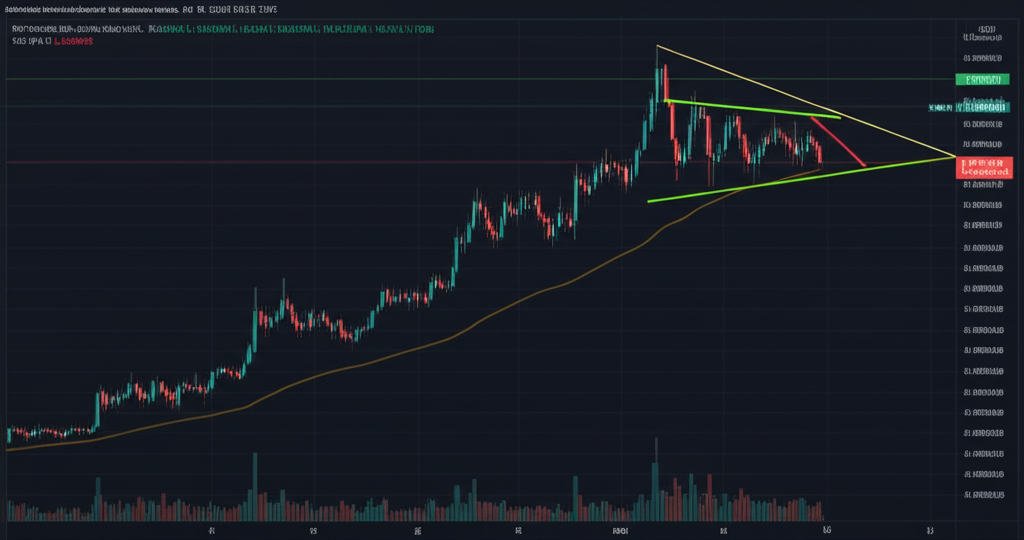As the US dollar shows signs of weakening against major currencies, investors and economists are closely monitoring whether this trend will act as a catalyst for a broader market rally in the coming months.
Recent Decline in the US Dollar Index
The US dollar index has experienced a notable decline, dropping by 5% over the past three months. This marks one of the most significant decreases the currency has seen this year, signaling a shift away from the strength exhibited throughout much of the previous decade. The dollar’s downturn comes amid changing economic indicators and shifting monetary policies, which together have influenced currency markets globally. Investors are analyzing this movement carefully, as the dollar’s value affects a wide array of financial instruments and sectors, both domestically and internationally.
Historical Correlation Between Dollar Declines and Equity Markets
Looking back at past trends, declines in the US dollar have often correlated with upticks in equity markets, especially within sectors heavily reliant on exports. A weaker dollar makes American goods and services more competitive abroad by lowering prices in foreign currencies, which can boost revenue and profits for export-oriented companies. This dynamic frequently leads investors to favor stocks in industries such as manufacturing, technology, and consumer goods that benefit from increased foreign demand. Historical data supports this relationship, suggesting that the current trend of dollar depreciation could create fertile ground for a broader market rally.
Positive Impact on Corporate Overseas Revenues
Several major US corporations have already reported improved overseas revenue figures attributed to favorable exchange rates linked to the weakening dollar. When the dollar declines, the value of earnings generated in foreign currencies increases when converted back to US dollars, enhancing overall profitability. Companies with significant international operations are thus experiencing tangible benefits, reflected in recent quarterly earnings reports. This currency effect can provide a crucial earnings boost that partially offsets other economic headwinds, making multinational corporations attractive investment targets during periods of dollar weakness.
Increased Foreign Investment Inflows
Alongside corporate earnings improvements, there has been a rise in foreign investment inflows into US markets. International investors, drawn by the prospect of acquiring dollar-denominated assets at a relative discount, are increasing their exposure to US equities and bonds. This influx of foreign capital supports higher valuations and liquidity in the markets. The trend also highlights the interconnectedness of global financial systems, wherein currency fluctuations can significantly influence cross-border investment decisions. As the dollar’s value softens, the US economy may see broader benefits from increased foreign participation in its financial markets.
Inflation and Federal Reserve Policy Concerns
Despite optimism surrounding dollar declines, analysts caution that inflationary pressures and Federal Reserve policy adjustments could significantly impact the currency’s trajectory and resultant market behavior. Recent data indicates persistent inflation in the US economy, which complicates the Fed’s mandate to balance growth and price stability. Potential changes in interest rate policy—whether tightening or easing—will affect the dollar’s strength and investor sentiment. Policymakers and market participants alike remain vigilant, aware that sudden reversals in monetary policy could disrupt the positive momentum created by a weaker dollar.
Expert Perspectives
“A weaker dollar tends to bolster multinational companies’ earnings, providing a boost to the stock market,” notes Sarah Chen, Chief Market Strategist at Apex Capital. Her observation underscores the earnings channel through which currency movements feed into equity performance. Conversely, Michael Raymond, Senior Economist at Global Finance Institute, offers a more cautious view: “Investors should be cautious as policy shifts from the Fed could reverse dollar gains, impacting market stability.” Raymond’s perspective highlights the risks associated with uncertain monetary policy and inflation dynamics, which could temper or even negate the benefits of the dollar’s decline.
Historical Context and Future Outlook
The US dollar’s prolonged strength over much of the past decade has been largely driven by its status as a safe haven amid global geopolitical and economic uncertainties, coupled with the dominant role of the US financial markets worldwide. This dominance fortified the greenback’s position as the world’s primary reserve currency, giving it a persistent advantage in global trade and finance.
However, recent global economic shifts have begun to challenge this dominance. Rising inflation within the United States, combined with altering interest rate policies from the Federal Reserve, are gradually eroding the factors that once bolstered the dollar’s supremacy. Additionally, increased geopolitical stability in other regions and diversification of global trade partners are contributing to a more multipolar currency environment.
Economists generally anticipate a continued moderate weakening of the US dollar in the near term. Should inflationary pressures be contained effectively and the Federal Reserve adopt a less aggressive approach to tightening monetary policy, this environment could provide fertile ground for sustained market rallies. Such rallies would be bolstered by improved corporate earnings, favorable valuations for dollar-denominated assets, and increased foreign investment inflows.
As the situation evolves, market participants are advised to remain vigilant, watching closely for shifts in inflation data and Fed communications that could signal a change in the current trajectory. The interplay between currency movements and market performance remains a critical area of focus for investors seeking to navigate the complexities of the global financial landscape.




